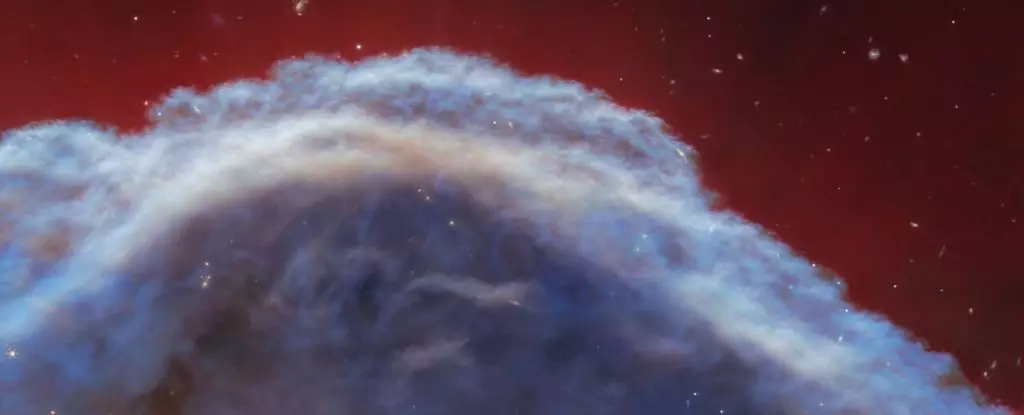The iconic Horsehead Nebula, located 1,300 light-years away as part of the Orion molecular cloud complex, has been captured in a new light by the James Webb Space Telescope. The recent mid- and near-infrared observations have unveiled never-before-seen features in this famous space cloud, providing astronomers with breathtakingly detailed images of the region atop the ‘horse’s’ head.
Using a total of 23 filters, researchers were able to achieve high resolution, tracking emission from particles as small as 20 nanometers across. This includes interstellar polycyclic aromatic hydrocarbons, scattered light from larger grains, and ionized hydrogen present in the cloud. The Horsehead Nebula itself is a dense clump of material that has collapsed under gravity, containing young stars in the process of formation, shielded from view by dust.
While the Horsehead Nebula lacks an internal source of light, it is heated by the nearby Sigma Orionis complex, which consists of very young, large, hot stars. These stars emit high temperatures of around 34,600 Kelvin, impacting the surrounding material in the nebula. The intense radiation causes photodissociation, breaking molecules apart under harsh rays and creating a field of mostly neutral interstellar medium known as a photodissociation region (PDR).
The recent observations from the James Webb Space Telescope have allowed scientists to uncover small-scale structures along the lit edge of the Horsehead Nebula, as well as a network of filaments perpendicular to the front of the PDR. This network comprises dust and gas contributing to the photoevaporative flow process, where gas becomes ionized and evaporates under strong light.
Moving forward, researchers plan to conduct an extensive analysis of the light emitted from the nebula to determine the chemical composition of the dust and gas. Additionally, they aim to study the size and flow of dust grains based on light scattering, enabling a detailed model of the evolution of dust within the PDR. Ultimately, these investigations will shed light on how these clouds change and evaporate over time, ultimately releasing the young stars trapped within.


Leave a Reply